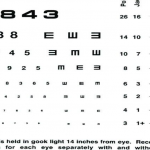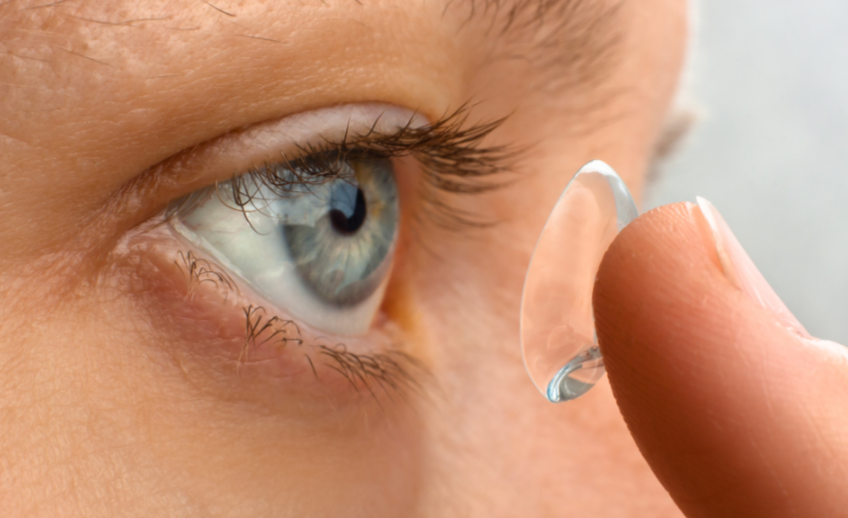LOW VISION:
Low Vision is the term used to describe a significant visual impairment that it cannot be fully
corrected with glasses, contact lenses, medication or eye surgery.
Depending on the type and severity of vision loss, people with low vision can still see varying degrees
or figures, shapes And even letters. This differentiates them from those who are totally blind and
cannot see any forms of light.
CAUSES:
In general, irreversible damage to ocular media or visual pathway due to any disease entity may result
in low vision.
LOW VISION AIDS:
Knowledge about the optical principle , details of working , indications , advantages and
disadvantages of the available LVA’s are mandatory before taking up the task of managing a patient
with low vision.
LVA’s can be divided in to two groups:
I. Optical LVA’s and
II. Non optical LVA’s
Let’s discuss about non optical devices:
The most commonly recognized electronic magnification system for reading and writing used by
visually impaired children, youths and adults is the closed circuit television (cctv) system.
A cctv system incorporates both projection magnification and relative distance magnification. A cctv
permits the low vision patient to visually access printed or hand written material and a multiplicity of
other objects by means of a magnified image projected onto a monitor screen .
A number of new electronic systems have been developed that may revolutionize the field of low
vision. The systems features a binocular, head mounted display, using computer generated software
and V-max.
I. CCTV:
The standard cctv consists of three major components: camera, monitor and moveable reading
platform.
The video camera that transmits a “live” image is focusable with a zoom lens and aperture.
A monitor serves as the screen on to which the enlarged print image is projected.
A moveable platform sits on a flat table or desk. The material to be read or written on its placed
on the platform, which is designed to be positioned underneath the camera. The platform glides
horizontally and vertically on a fixed frame when manipulated by hand.
USES:
Cctv systems are used for educational, vocational and personal pursuits. They serve multiple purposes
for an array of activities that includes reading, writing, typing, specific daily living skills, reading ,
writing, typing skills leisure time activities and computer technology access.
ADVANTAGES:
1) Adjustable projection magnification levels.
2) Reading distance is more variable than most other low vision devices.
3) Polarity change is available.
4) An illumination system is designed with most units .
5) Brightness and contrast intensity controls are available.
DISADVANTAGES:
1) Physical size may hinder portability and maneuver ability.
2) Training and practice time is needed to become a proficient user.
3) Limited availability of maintenance services for components.
4) Initial cost may be higher than most low vision devices.
II. HEAD-MOUNTED SYSTEMS FOR DISTANCE AND NEAR:
New high technology head-mounted systems have been developed for patients with low vision.
Using computer technology and miniature cameras , these systems improve a patient’s vision via
magnification and enhancement of the visual images.
ADVANTAGES:
1) The system is a revolutionary new idea
2) The device can provide magnification, contrast, and brightness enhancement.
3) The device can provide a wide range of magnifications.
4) The device has an automatic focus ability.
DISADVANTAGES:
1) The headset is heavy with extended wear.
2) The headset is cumbersome.
3) The headset can cause claustrophobia
4) The battery has the capacity to last only a maximum of 90 minutes.
5) The system is very expensive.
III. V-max:
The v-max is the next generation of a head-mounted assistant device that adress distance,
intermediate, and near vision. It is an automatic-focus system with a range of magnification,
at distance, from 0.8x to 20x. This system also has the capability of having five customized,
preset magnification levels for the patients specific needs, allowing the patient to change
quickly from one level of magnification to another. The manufacturer has linked the
equivalent view of this system to watching television on an 80 inch color screen from a
distance of 10 ft.
The v-max requires no special fitting procedures. It can be easily evaluated by placing it on the
patients head, fitting over the patients prescription spectacles. Therefore, any patient can be
evaluated with this system, regardless of prescription.
ADVANTAGES:
1) The system can be used for distance, intermediate and near.
2) The device can provide a wide range of magnifications.
3) The system has an automatic focus capabilities.
4) The camera has color capabilities.
5) The system is completely portable with use of a battery.
DISADVANTAGES:
1. The headset is cumbersome.
2. The control box and battery pack are heavy and cumbersome.
3. The battery has the capacity to last only a maximum of 90 to 120 minutes.
4. The system is expensive.
5. The system is not widely available.
READ MORE ARTICLE:









